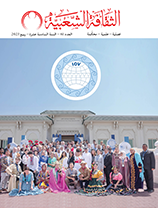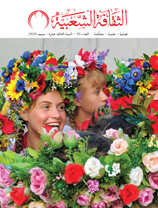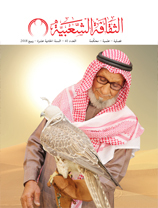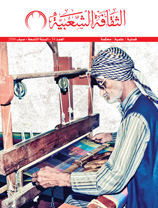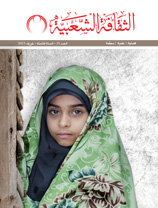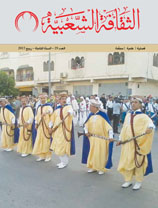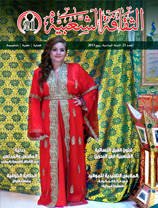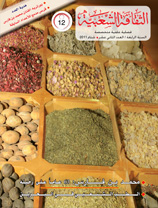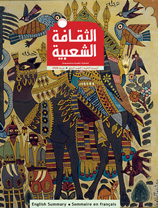The folktale in Palestine and Jordan: Identity And Authentication
Issue 11

Omer Abdel Al Rrahman Al Sarissi (Jordan)
Some of the origins of the ancient religion contain a dialogue between the individuals and the souls of the dead. This is what known as Al Hama or the echo; it is the idea that these souls are transmigrated by the green birds. There is also the totem which sanctifies either specific plants or animals. The tree of Um Al Shrayet is still vivid in my mind and the minds of those of my generation. There is also the fetishism which ascertains that the part takes all the characteristics of the whole and it plays the role of the latter. A hair of the bewitched horse, for instance, when burnt, could bring the horse instantly. Moreover, the image of a person could represent him. Moreover, the bones of the dead green bird could resurrect it. Names also have power of their owners. In brief there so many applications in this respect such as witchcraft and its practices and the belief in the metamorphosis. There are also fantasies rooted in the ancient religions such as the trials which are performed underground between the human beings and the jinn. On the other hand the local factors are illustrated in traditions deeply rooted in the past strongly linked to the folktale in affirming the national existence. For example the tradition of showering water on the ground in the evening in front of the houses is an evidence of fearing the evil souls. This tradition is originated in the belief of ghosts and the haunted houses. Furthermore, the local factors which are emerged from the place and time as those of physical geography have influences on the types of folktales narrated all over the world. These ancient roots of the folktale are still vivid and indicate the authenticity of the folktale. The narration of these folktales plays specific functions. Believing that the folktales are traditional beliefs and giving explanation for the creation of the cosmos or any other natural phenomenon. It is known that studying the traditional heritage helps understand the evolution of the human thoughts in this part of the world. A good chance has been afforded for the researcher in tracing a folktale narrated in Egypt, Lebanon, Iraq and some parts of Jerusalem. The tale speaks about a king who has been warned that an orphan will take over his throne. Although the king has done every thing he could, yet he looses the throne. Applying the Finnish method, the researcher notices that the folktale consists of seven motifs: the king, the birth, the prophecy, the dismissal, the rescue, the second rescue and the materialization of the prophecy. The researcher comes to the conclusion that the text of the folktale had originally come from Iraq then accommodated in the myth of the Babylonian and the civilization of the Tigress and Euphrates. The tales had transmitted from there by the ancient commercial caravans which used to travel between Babel, Palestine and Syria. The caravans might transmit the text to Egypt. But the Lebanese text carries none of the ancient motifs, so it is possibly borrowed from the neighbors of ancient Lebanon. To sum up, this is a simple example of the traditional texts performed in the Arab world. The researcher concentrates on a local type which is influenced by the environment in which neighboring nations have common historical and moral origins.











